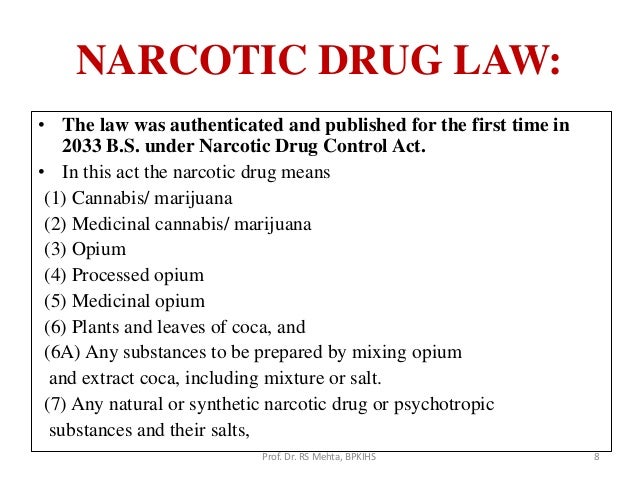List Of Narcotics By Class
EU Member States classify drugs and precursors according to the three UN Conventions of 1961, 1971 and 1988 (abbreviated below to UN61, UN71 and UN88), controlling and supervising their legitimate scientific or medical use while taking into account the particular risks to public or individual health. This Topic Overview looks at the UN system, the EU’s system of pan-European control, and finally gives a table outlining the similarities and differences of the national systems in the EU and Norway. The UN system Some 250 substances are listed in the Schedules annexed to the United Nations (New York, 1961, amended 1972), the (Vienna, 1971) and the (introducing control on precursors) (Vienna, 1988). The purpose of this listing is to control and limit the use of these drugs according to a classification of their therapeutic value, risk of abuse and health dangers, and to minimize the diversion of precursor chemicals to illegal drug manufacturers. Narcotic drugs Narcotic drugs are classified and placed under international control by the 1961 UN Single Convention on Narcotic Drugs, as amended in 1972. The Single Convention limits 'exclusively to medical and scientific purposes the production, manufacture, export, import, distribution of, trade in, use and possession of drugs' (art.


List Of Narcotics By Schedule
The to the 1961 Convention classifies narcotic drugs in four Schedules: Schedules Harmfulness Degree of control Examples of listed drugs I Substances with addictive properties, presenting a serious risk of abuse Very strict; 'the drugs in Schedule I are subject to all measures of control applicable to drugs under this Convention' (art. The EU system European Union legislation establishing different classes of substances is limited to the EU Regulations that define classes of precursors, stemming from the EU objectives of free movement of goods.
What Class Of Drug Is Cocaine
These are the, which regulates intra-Community trade, and by the. While European Union legislation does not establish different classes of narcotic or psychotropic substances, the, can provoke a Council Decision requiring countries to put a drug under national controls equivalent to those controls for substances listed in the UN Conventions of 1961 and 1971. Risk assessments under the 2005 Council Decision resulted in pan-European controls for BZP and mephedrone. The mechanism is described in detail by the in the.